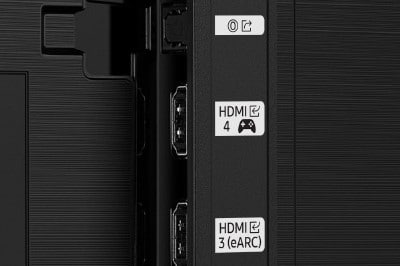The Best Gaming TV Features in 2023
Posted on October 24, 2021 By Alison P
A TV is for more than just watching! When gaming is often the main event in your living room, you should know about the TV technology that'll make your gaming experience the best it can possibly be. Read on for the latest info on finding the best gaming TV!
Which basic features are important on a gaming TV?
Resolution
A TV's resolution refers to the total number of pixels on the screen; the greater the number of pixels, the higher the resolution will be. If you're going for the best resolution, a 4K TV is the way to go. The display on a 4K TV is 2160p, or 3840 x 2160, which is exactly four times the amount of pixels on a full HD TV. 4K will give you a sharp, clear image that lets you see every detail.
HDR
HDR stands for High Dynamic Range, and it's another component of creating a realistic image. While a TV's resolution refers to how sharp the image is, HDR is all about contrast and color. A TV with HDR means light colors are brighter, dark colors are deeper, and a wider color palate offers a more realistic image. When combined with the high resolution of 4K, you'll see images in a whole new way. For an even more advanced HDR image, look for a gaming TV with Dolby Vision compatibility. The Xbox Series S and Series X consoles are both compatible with Dolby Vision, and a TV with this feature will make your gaming experience on these consoles into a visual extravaganza.
Screen Type
One popular type of gaming TV screen is OLED, or Organic Light-Emitting Diode. The screen of an OLED television is made up of millions of diodes in the form of pixels. What's unique about this type of television is that each individual pixel is self-lighting; in addition to dimming and brightening, the pixels can actually switch on and off. This produces the darkest black possible, creating superior contrast and colors that truly stand out. Another type is QLED, and the feature that sets this TV apart from other types is its screen's quantum dot layer. Nestled between the LED backlight and the LCD panel, the quantum dot layer enhances the onscreen image with greater brightness and a color spectrum of over a billion shades. A QLED television still relies on the LED backlight for a light source, but the quantum dot layer enhances the detail of the onscreen image itself. The QLED screen also allows increased visibility from every angle and is designed to keep glare to an absolute minimum.
Size
When it comes to screen size, choosing the best 4K TV for gaming really depends on how large your living room is. A good metric is to add ten inches to the minimum screen size for every foot of distance between the screen and your seat. For example, if you're going to be sitting six feet away from your TV, don't go any smaller than a 60" screen.

What are some features specific to the best gaming TVs?
The key to unlock a TV's best gaming-specific features is an HDMI 2.1 port, a specialized port designed just for gaming consoles. TVs with this port offer a variety of enhancements designed for gaming. If you're zeroing in on the best gaming TV for the PS5 or the Xbox Series X, the HDMI 2.1 port is an absolute necessity, as these two consoles are designed especially for use with the 2.1 connection. If you're using a different console, you can still connect to the 2.1 for an upgraded gaming experience. No matter which console you're using, be sure you're using a proper HDMI 2.1 certified cable a regular HDMI cable does not have the capabilities to bring you all the 2.1 features. Here's a quick rundown of the best gaming features that come with the HDMI 2.1 port!
Improved Bandwidth
A general improvement you'll notice with HDMI 2.1 is upgraded bandwidth. Simply put, the TV can transfer more data in less time. With speeds of up to 48Gbps, you'll enjoy higher resolution, more vibrant color, and more frames per second. (Again, make sure you're using the proper HDMI cable!)
Variable Refresh Rate
Movies and TV shows have a frame rate that remains steady from beginning to end. A video games, however, has a frame rate that can fluctuate greatly depending on how much processing your console is doing, and unfortunately this can result in stuttering, screen tearing, or freezing. A fantastic feature that solves this problem is Variable Refresh Rate, or VRR. When a TV has VRR, it automatically adjusts itself to suit the frame rate output of your gaming console, ensuring a consistently smooth display no matter what's happening onscreen.
Auto Low Latency Mode
Have you ever experienced an annoying delay between hitting a button on your controller and seeing the corresponding action happen? That's called input lag, and Auto Low Latency Mode (ALLM) is a gaming TV feature that's designed to stop it in its tracks. When you power up your gaming console, a TV with ALLM will detect its signals and automatically switch to a low-latency setting, virtually eliminating input lag.
eARC
Another important component to a great gaming experience is crystal-clear sound, and eARC is definitely a gaming TV feature to know about. eARC stands for Enhanced Audio Return Channel, and when connected to a soundbar or receiver it's able to support up to eight channels of uncompressed audio in formats like DTS and Dolby Atmos. Instead of compressing the audio into a smaller bandwidth, eARC surrounds you with a full spectrum of auditory detail.
Ready to find the perfect gaming TV? Get started now!